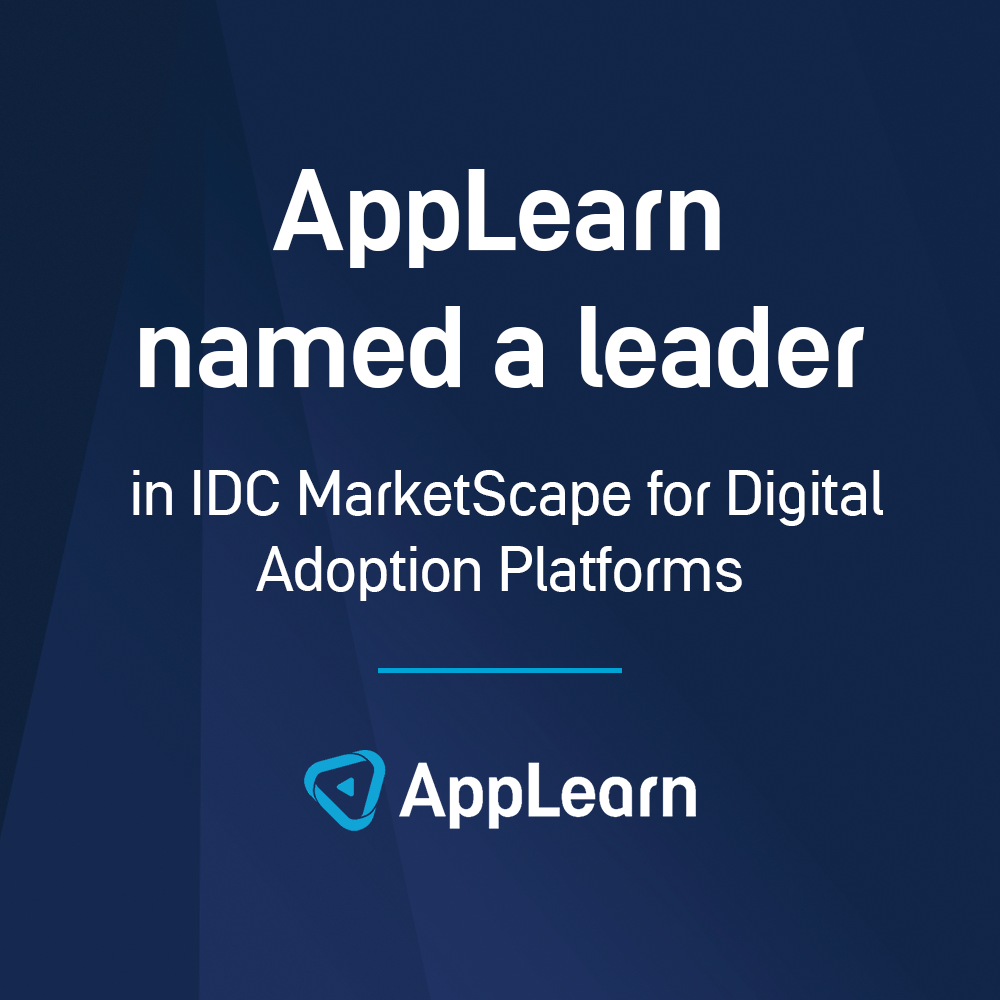By Ella Drimer
•
May 3, 2024
The five barriers to digital adoption in 2024 Achieving a unified digital employee experience that powers high-order productivity is an ongoing journey. It requires the ready embracement of emerging technologies and an ability to adapt to evolving workforce dynamics. For several years, the traditional workplace has ceased to be a singular physical location. Today, it is a digital space where simplicity, personalization, and seamlessness converge to create spaces that inspire employees to maximize their potential. However, in the path of progress lie various barriers. For true corporate digital adoption to be realized, these barriers must be understood before they can be dismantled. Here, we present the five that we believe must be dismantled with the greatest urgency. 1. Managing distributed teams in a hybrid work model Balancing the flexibility of remote work with in-office collaboration while maintaining productivity and cohesion is a formidable barrier to digital adoption. The hybrid model can lead to disparities in information access and team connectivity, risking siloed departments and misaligned objectives. A PwC study revealed that among the top three factors hindering productivity in remote work environments was down to employees encountering obstacles in accessing the information they needed. Sustaining a unified company culture and ensuring equal engagement from both remote and in-office employees also requires effort and innovation. It is a space in which traditional management techniques can falter. Strategies for Productivity Combining unified communication tools offering seamless communication, project management, and collaboration features can bridge the gap between remote and in-office workers. By adopting such tools and establishing clear policies and performance expectations on work hours, availability, and communication protocols, all employees, regardless of location, can understand their responsibilities and how their work contributes to broader company goals. A cohesive hybrid culture can be further promoted by initiating regular check-ins, virtual team-building activities, and inclusive meetings where remote and in-office employees contribute equally. This strategy can be bolstered by a leadership style that values trust, autonomy, and results over physical presence and by providing employees with training on digital tools, self-management techniques, and methods for managing remote teams. 2. Finding time to focus As companies strive to stay ahead in competitive markets, leaders and employees find themselves tangled in a web of priorities that pose a dismaying barrier to digital adoption. Amid the daily grind of urgent tasks and short-term objectives, the long-term benefits of digital transformation are often overshadowed, making it difficult to allocate the time and resources necessary for its completion. With finite resources, leaders must balance sustaining current operations and investing in digital innovation. Strategies to Enhance Focus Allocating regular, uninterrupted time for teams to focus on digital strategies can help embed these efforts into the core business agenda. This approach is fortified by implementing sophisticated project management tools that help streamline workflows and release valuable time and resources to focus on digital transformation projects. Mindsets can be further altered by similarly encouraging a culture that values long-term innovation alongside short-term efficiency. Celebrating small digital adoption wins and illustrating their impact on daily operations allow leaders to build momentum for larger transformation projects. Instead of aiming for daunting, large-scale transformations, leaders can focus on incremental changes that gradually integrate digital solutions into the workplace and allow for steady adaptation to new technologies and processes. 3. Email culture: transitioning beyond the inbox The ingrained email culture often hampers collaboration and efficiency, slowing the embrace of more agile and effective digital communication tools and platforms. Daily deluges of emails flooding inboxes can lead to information overload. A Forbes survey highlighted that email fatigue could drive 38% of employees to quit their jobs. Critical communications are lost in the noise, causing delays and inefficiencies in decision-making and project advancement. Email's linear and segmented nature also restricts lively interaction, making it challenging to foster the level of collaboration and spontaneity that modern digital tools can support. However, the comforting familiarity of email can lead to resistance to adopting new communication platforms despite their potential to streamline workflows and enhance team collaboration. Forging a Path to Enhanced Communication Educating teams on the benefits and functionalities of modern communication tools is the first step in shifting mindsets. Tailored training sessions and hands-on workshops can demystify these platforms and encourage adoption. Here, leadership plays a central role. When leaders prioritize alternative communication platforms for collaboration and updates, it sets a precedent for the entire organization. By clearly articulating the advantages of moving away from an email-centric model—such as improved project visibility, faster decision-making, and more cohesive team dynamics—teams can be motivated to explore and gradually embrace new tools. 4. Lack of resources Time limitations, a pervasive shortage of skilled talent, and stringent budget restrictions collectively form a barrier that can stall or derail digital initiatives. According to a KPMG study, 54% of organizations said they’re not able to accomplish their digital transformation goals because of a lack of technically-skilled employees. Overcoming these obstacles requires a strategic allocation of resources and the pursuit of innovative solutions that can maximize impact. As digital technologies evolve at an unprecedented rate, the gap between the demand for and supply of tech-savvy professionals widens, leaving businesses struggling to find the expertise needed for digital innovation. Meanwhile, financial constraints, especially in times of economic Uncertainty, mean cost-cutting is prioritized over-investment in digital advancements. Strategies for Resource Optimization Effective resource management involves pursuing digital initiatives that align closely with broader strategic goals. Developing a clear, phased plan for digital transformation can help allocate resources to projects with the highest potential impact. Building partnerships with tech companies and other organizations can also help by providing access to expertise and technologies that might otherwise be unattainable. To address the talent gap, internal comprehensive training , and upskilling programs can empower existing employees to take on digital projects, reducing the need to compete in the tight labor market for digital skills. These new competencies can then be applied to open-source software and cloud-based services that reduce upfront costs and allow businesses to scale their digital infrastructure as needed. 5. White glove expectations: balancing sophistication with scope Heightened anticipations for a seamless, sophisticated digital workplace experience exert considerable pressure on leaders to deliver top-tier solutions. With the digital workplace becoming a central element of modern business, users—from employees to customers—demand intuitive, efficient, and comprehensive digital interactions. Striking a balance between fulfilling employee expectations of best-in-class UX/UI in personal interactions and managing the scope and resources of digital projects is a critical task for businesses aiming for digital adoption success. It requires leaders to invest in design and user experience research and overcome digital project complexities that necessitate a broad range of technical expertise. The pace at which digital technologies evolve also sets an expectation for continuous improvement and innovation within digital workplaces, compelling businesses to adopt an agile approach to digital project development. Managing Expectations and Project Scope Establishing clear project objectives and boundaries from the outset can help manage expectations while engaging stakeholders in the scoping process to ensure alignment on feasibility. By implementing digital projects in phases, businesses can deliver value incrementally, adjusting to feedback and expectations iteratively. Comprehensive research can help understand the needs, preferences, and pain points of digital workplace users. This can further guide the prioritization of features and functionalities, ensuring that resources are allocated to areas with the highest impact on user satisfaction. Incorporating this understanding with user feedback throughout the project lifecycle can enable continuous alignment of digital solutions with user expectations. How digital adoption platforms (DAPs) can help Owing to the rise in applications and digital processes, employees switch between an average of 35 separately connected yet business-critical applications more than 1,000 times a day, sometimes to complete just a single process. It’s hardly surprising that users lose confidence, administrative burdens spiral, and adoption rates collapse. However, it’s also fertile ground on which DAPs flourish . By mitigating these risks and stitching together technology stacks, improvements and consistency are channeled to the digital employee experience (DEX) . From deepening understanding of internal business processes to upgrading specialized tasks that uphold smooth operations, DAPs have become key drivers of ROI and positive DEX .





